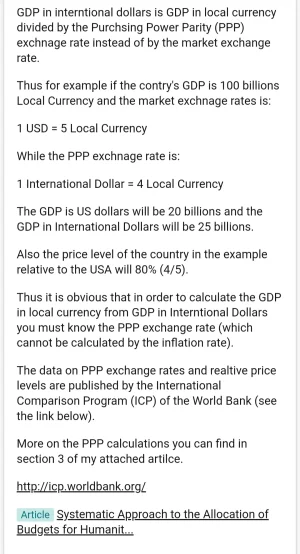- Joined
- Jun 27, 2024
- Messages
- 2,925
- Likes
- 10,381
81. Progress in rural sanitation facilities and potable water access is significant .
82. The annual consumption of fertilizers per hectare shows agricultural development .
83. Progress in irrigation coverage and electrification of rural households is commendable .
84. The number of registered electric vehicles is rising .
85. The proportion of renewable energy in total energy consumption is increasing .
86. The trend in the distribution of UDAY savings shows energy efficiency .
87. The SDG India Index performance highlights state-wise progress .
88. The rise in per-capita incomes and per-capita electricity consumption shows economic growth .
89. The rise in forest and tree cover as a percentage of geographical area shows environmental conservation .
90. The number of households without any of the selected assets has declined significantly .
91. Digital payments penetration shows financial inclusion .
92. UPI transaction volumes highlight digital financial integration .
93. The number of ATMs per million people shows banking outreach .
94. The participation of SHGs in economic activities is increasing .
95. SHG members accessing loans through bank linkages show financial empowerment .
96. The rise in deposits and credits shows banking sector growth .
97. The positive growth trend in credit to GDP ratio indicates financial deepening .
98. The share of domestic bank credit in total external financing is substantial .
99. The increase in the number of unicorns shows innovation and entrepreneurship .
100. The volume of startups and the value of their funding show a positive trend in the entrepreneurial ecosystem .
82. The annual consumption of fertilizers per hectare shows agricultural development .
83. Progress in irrigation coverage and electrification of rural households is commendable .
84. The number of registered electric vehicles is rising .
85. The proportion of renewable energy in total energy consumption is increasing .
86. The trend in the distribution of UDAY savings shows energy efficiency .
87. The SDG India Index performance highlights state-wise progress .
88. The rise in per-capita incomes and per-capita electricity consumption shows economic growth .
89. The rise in forest and tree cover as a percentage of geographical area shows environmental conservation .
90. The number of households without any of the selected assets has declined significantly .
91. Digital payments penetration shows financial inclusion .
92. UPI transaction volumes highlight digital financial integration .
93. The number of ATMs per million people shows banking outreach .
94. The participation of SHGs in economic activities is increasing .
95. SHG members accessing loans through bank linkages show financial empowerment .
96. The rise in deposits and credits shows banking sector growth .
97. The positive growth trend in credit to GDP ratio indicates financial deepening .
98. The share of domestic bank credit in total external financing is substantial .
99. The increase in the number of unicorns shows innovation and entrepreneurship .
100. The volume of startups and the value of their funding show a positive trend in the entrepreneurial ecosystem .
Last edited:
















